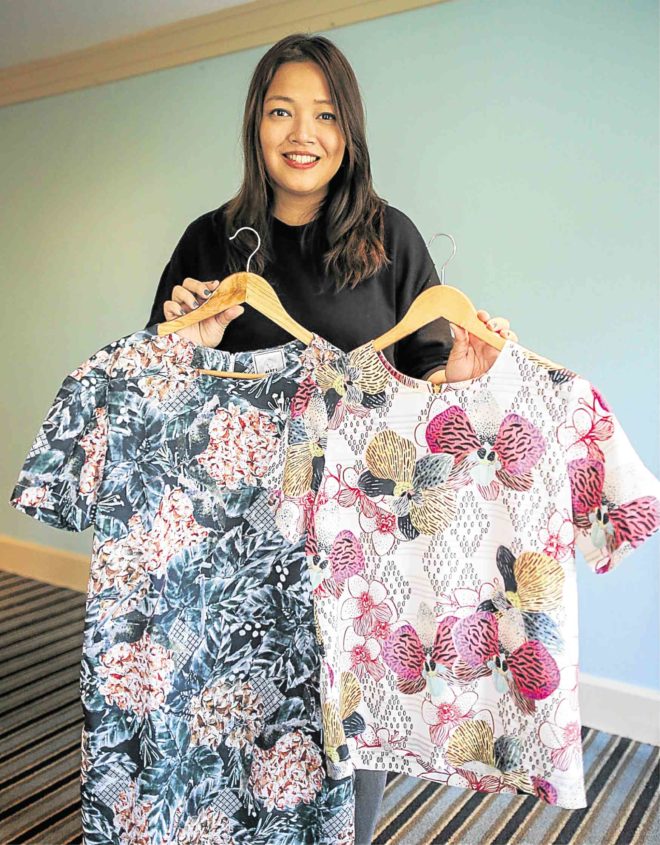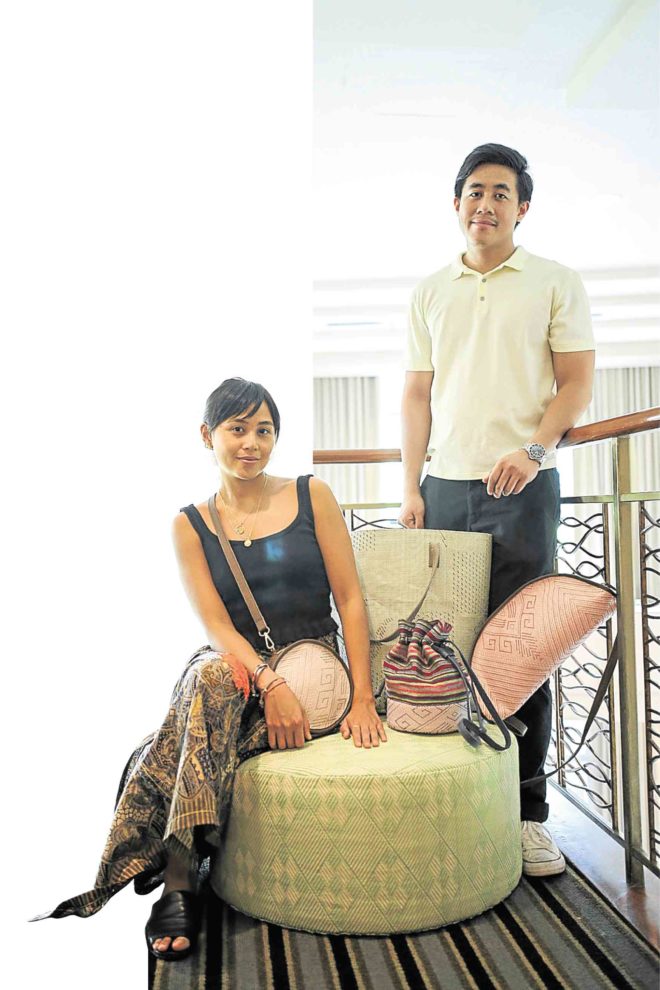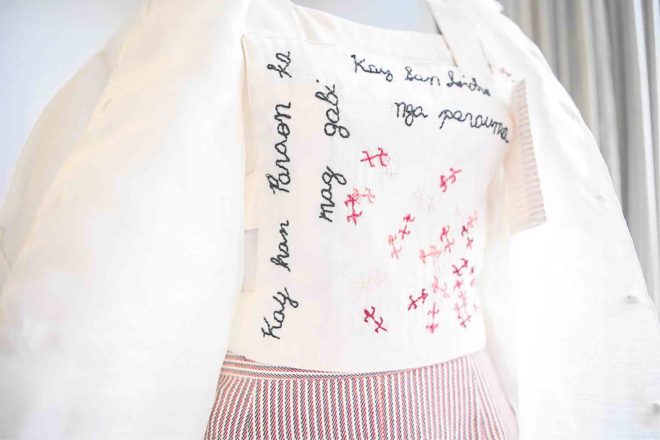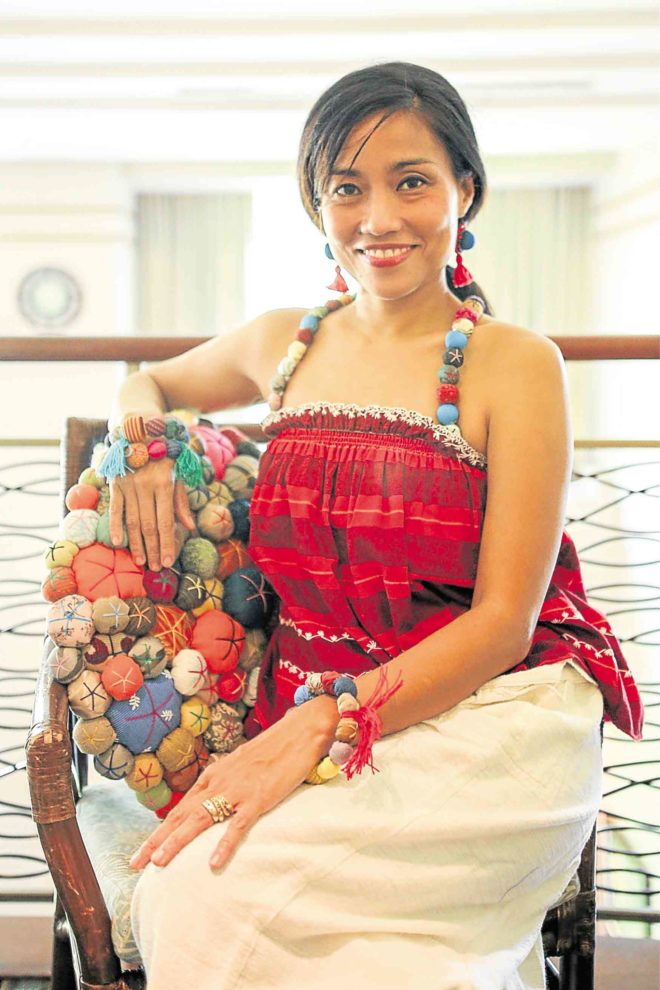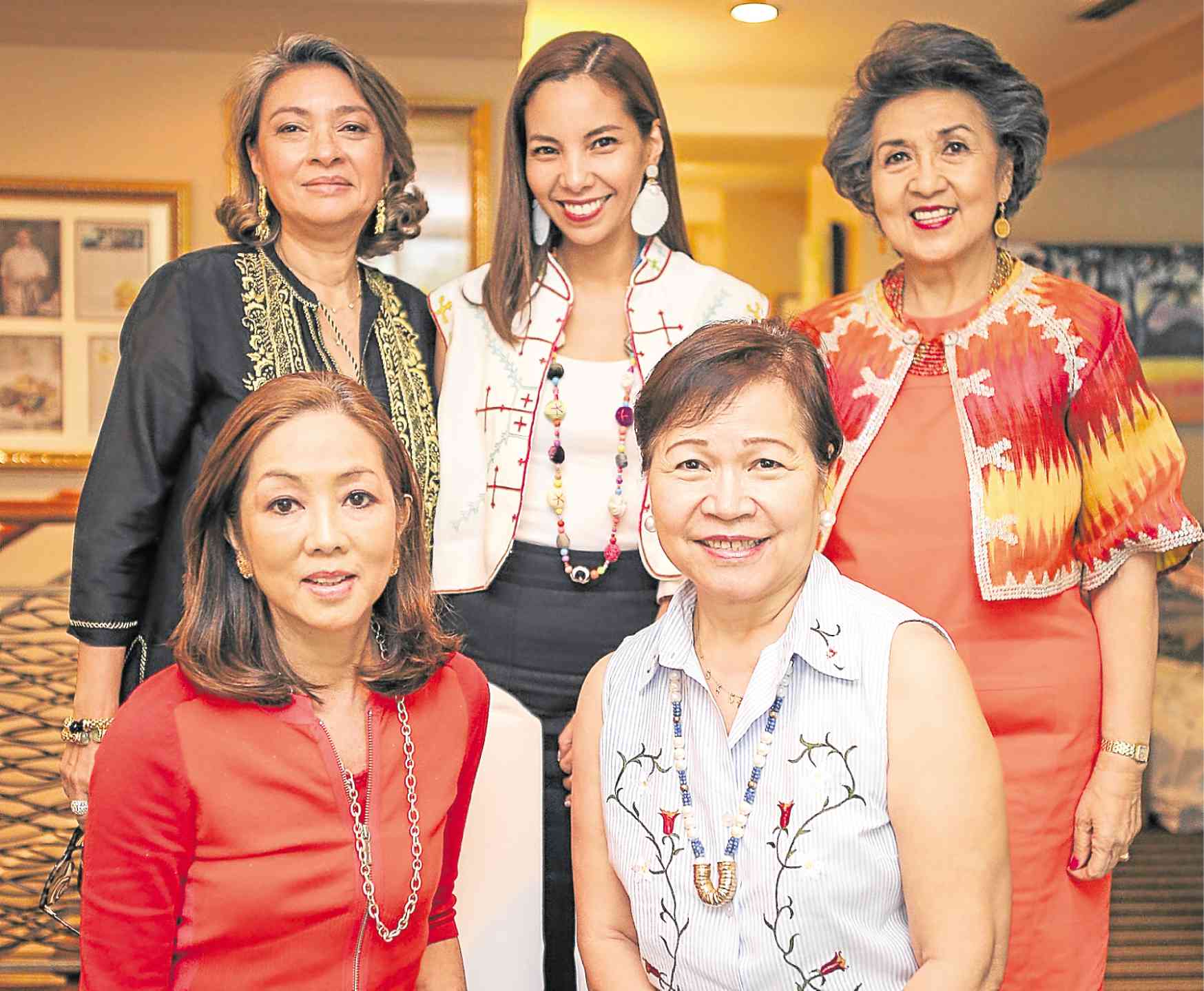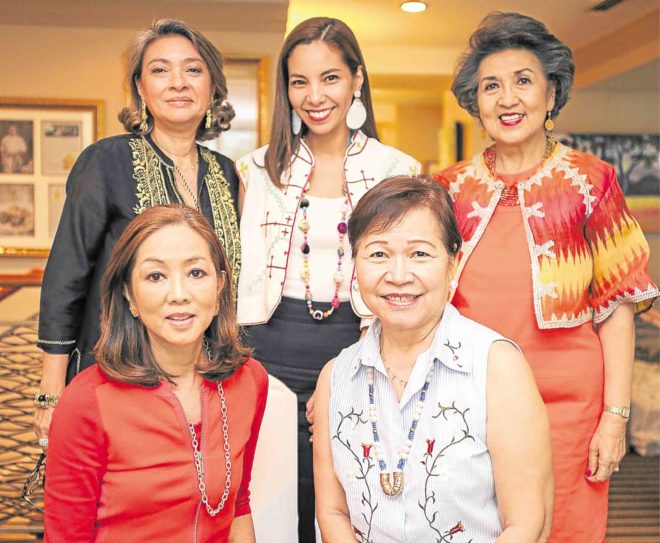
ArteFino, the newest annual arts and crafts fair that debuts next month, intends to take artisans, entrepreneurs and their admirers a step up by linking creativity and business into a network for sustainable, long-term livelihood that goes beyond the usual weekend bazaar.
The first ArteFino Fair happens on Aug. 25-27 at the Penthouse, 8 Rockwell.
Organizer Cedie Vargas envisions a “launch pad… for world-class Filipino products, concepts and ideas” that draws heavily on the crafted products’ “history, materials and processes.”
Consider former magazine editor Apol Massebieau’s sample fabric swatches that underemployed women from Las Piñas repurpose into fabric pompom furniture; Gabbie Sarenas’ clothes “infused” with animistic prayers, or the Great Women Project’s figure-friendly threads that literally weave together designers’ imaginations into inabel blankets.
Vargas and fellow organizers Mel Francisco, Mita Rufino, Maritess Pineda and Susie Quiros selected 70 artisans and designers working with local communities around the country. The main criterion was their individual display of the elusive “Stilo ArteFino” quality.
“Each of them has a point of view, a story to tell. All crafts are handmade and feature the best of Filipino craftsmanship and tradition,” Vargas said in an interview with Lifestyle.

Leveling up
ArteFino takes the talent showcase one notch further. Instead of an annual fundraiser, the movement pools its efforts to create an advocacy that aims to create a “whole ecosystem of artists-designers-communities” that provides the market a continuously leveled-up line of products.
Vargas draws from her experience as an organizer of MaArte, the fundraising initiative of the Museum Foundation set up by friends of the National Museum. She observed that MaArte participants would take pains to create one-of-a-kind designs that would only be copied by less creative manufacturers the next season.
“Filipino artisans have a difficult time competing with China. And there was a time the Europeans and other foreign buyers moved out of the Philippines and went to China and Vietnam because China can mass-produce,” she recalled.
While it is hard to compete with an economic giant, Vargas said Filipinos can up the ante by producing entirely new designs that still adhere to their unique story the following year.
“We ask them to level up. It’s (a way of protecting) their own craft. I said, ‘if you do the same things, there is no growth and you are open to (imitation).’ When you see a product, for sure it would be copied next year,” the organizer explained.
But more than constant creativity, ArteFino also incorporates stories into crafts.
Sarenas’ multi-tie cotton fabric aprons made by Bontoc weavers, for example, are embroidered with animist and early Christian prayers that appeal for fertility and a good harvest.
A piña shifu blouse from Kalibo is sprinkled with gecko lizards in varying shades of pink. Geckos, Sarenas pointed out, are considered fertility symbols throughout Southeast Asia.
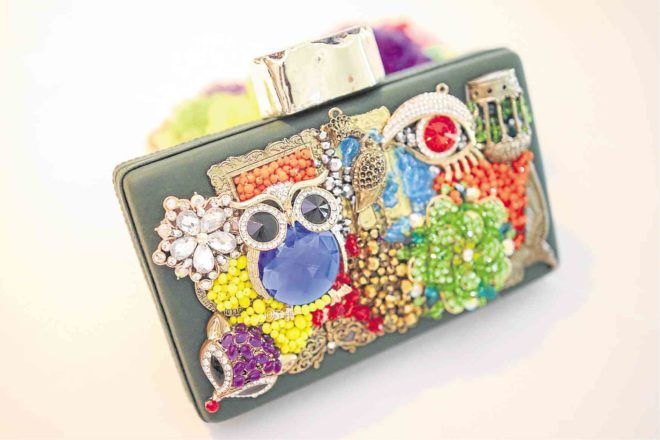
Fabric swatches
Massebieau’s Good Luck, Humans produces quirky pompom furniture inspired by a pompom cherry that she used to top ice cream stuffed toys for a previous children’s line.
Massebieau sources fabric swatches from designer friends and cuts them into smaller pieces that her workers take home.
“Most women in (low-income communities) quit their jobs to take care of their children. Or take jobs that pay P150 a day. If they cannot afford childcare, I want a product they can do at home,” she explained.
The women turn the fabrics into pompoms that are fashioned into pillows, bustiers and even upholstery.
Great Women (Gender Responsive Economic Action for the Transformation of Women) is a project of the Philippine Commission on Women. It believes each community can be nurtured by a Big Woman entrepreneur who, in turn, employs the area’s women through a sustainable creative trade.
Great Women’s Imelda Canuel mentioned a collective where Ilocos weavers sew embroidery into figure-friendly clothes fashioned from inabel blankets.
“A Jeannie Javelosa design was submitted to weavers in Lucban, Quezon. Happy Andrada made the dress. The weavers earn money, lahat may income. Great Women does projects where designers are paired with local communities, depending on the markets they cater to,” Canuel added.
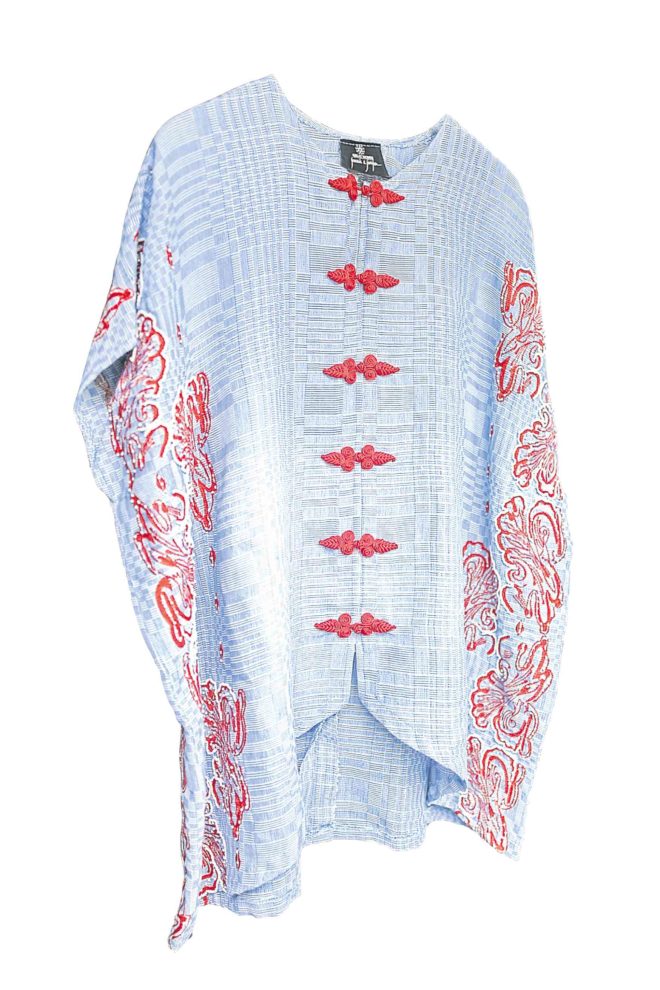
Pattern designer
Mari-Mari designer Alessandra Lanot is a pattern designer who translates gouache and watercolor patterns on paper into digitized paintings that are directly printed on fabric.
Its maiden collection of simple shift dresses dubbed “Hardin & Habi” is an ode to Philippine flowers and illustrations handwoven on textile.
The collections are limited, Vargas warned. Lanot said Mari-Mari wants the wearer to connect to nature “and be proud of her own culture.”
“Since we produce custom prints, we only print the fabric we need. We are able to minimize fabric waste,” Lanot noted.
The siblings Cara and Rocco Sumabat use recyclable plastic to produce banig-inspired ottomans and the best-selling Multo and Bilog bags that have been popular in previous MaArte fairs.
Vargas stressed that it is the advocacy component where working communities are the ultimate beneficiary that pushed ArteFino to become independent.
“We intend to do this yearly. We have a strong following. People look forward to it because of the strong products. We have to see a very elevated level of Filipino craftsmanship all in one place,” she said.
For inquiries, e-mail [email protected].
Visit @artefinoph
on Facebook and Instagram.
